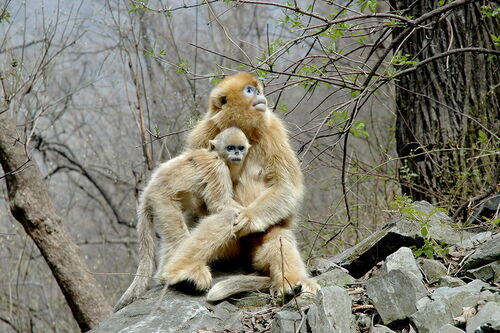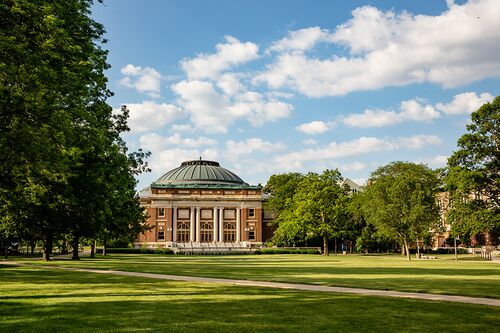Exploring Maya life
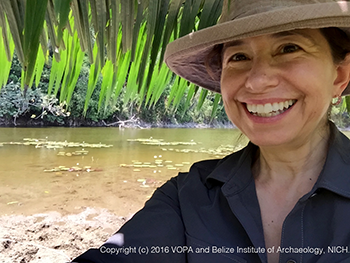
It is early May in central Belize, nearing the end of the dry season. While farmers anxiously await the beginning of the rainy season vital for crops, archaeologists hope it starts as late as possible. Tropical storms transform the landscape, making it difficult to get around, even in four-wheel-drive vehicles. Also, excavating in the clayey mud is not fun.
We did not start this season excavating ancient Maya ruins, however. We are first collecting sediment samples. Allow me to explain.
This season, the Valley of Peace Archaeology project has several goals as part of our long-term efforts to understand how people lived in a sustainable manner for more than three thousand years (2500 B.C.-800 A.D.), and how several prolonged droughts transformed their lives (800-900 A.D. and beyond). In this rainfall-dependent society, the timing, frequency and amount of rain could be the difference between life and death.
Openings in the earth, such as water bodies, served as portals to the underworld and a means through which the Maya communicated with gods and ancestors.
To address the vital importance of water, we have been exploring the sacred water bodies and associated ceremonial architecture at Cara Blanca, Belize.
To date, evidence indicates that the Maya intensified their visits to Cara Blanca with its 25 water bodies, and built ceremonial buildings, including a water temple at Cara Blanca Pool 1, which is a 60-plus meter deep cenote (SEN-oh-tay, a steep-sided sinkhole fed by groundwater).
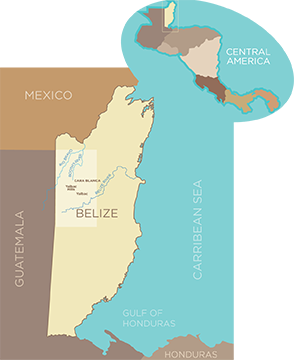
Researchers think that Pool 1 served as a pilgrimage destination between 800 and 900 A.D. when several prolonged droughts struck.
We will continue to excavate the ceremonial structures found adjacent to Pool 1. We also are collecting sediment cores from Pool 7, a shallow lake that has the potential to yield insights into landscape transformation and climate change. Vital to this work is our inspection of the sediment cores and pollen grains.
“All of the pollen grains that are currently making you sneeze are morphologically distinct down to the species level,” says anthropology doctoral student Jeannie Larmon, who is leading the coring effort. “Because the pollen grains have a durable outer layer (the exine), they can persist for millions of years. Examining fossil pollen from lake sediments allows archaeologists to identify large- and sometimes small-scale changes in past climates and human/plant interactions. When evaluated in concert with the archaeological record, pollen can shed light on how people in the past existed with and within their environments.”
Sediments have their own story to tell, says geology doctoral student Melinda Higley, another member of our team.
“The minerals, identified through X-ray diffraction, in the lake sediment could offer clues to past water chemistry, telling us about the hydrologic conditions of the past—perhaps even the type of water the Maya relied upon,” Higley says.
As primary investigator, my job is to not only teach and train the graduate students and field school students, but also to interpret and tie together these many disparate data sets.
This vast endeavor would not be possible without the assistance of our experienced field assistants from the Valley of Peace Village: Marcial Arteaga, Cleofo Choc, Stanley Choc, Juan Antonio Lopés, Antonio Lopez, Ernesto Vasquez and Carlos Vasquez. Their knowledge of the jungle and archaeology makes our lives tons easier—and much more fun.
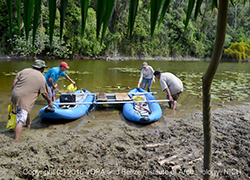
Pool explorations are only one part of the 2016 goals; we also will conduct a salvage archaeology program in recently cleared agricultural fields between Yalbac and Cara Blanca.
“In cleared fields, Maya mounds (collapsed structures) are easy to spot,” says anthropology doctoral student Erin Benson. “As you can see in the photo, each mound shows up clearly as a white patch against the dark, nutrient-fertile soil. The important question is which mounds to excavate. We plan to sample several different mound types, ranging from small single structures to larger multistructure platform groups.”
Eight University of Illinois at Urbana-Champaign students are also here as part of a six-week archaeology field school.
More on this topic in my next blog post.
All of our research is conducted under the auspices of the Belize Institute of Archaeology, National Institute of Culture and History.
Editor’s note: This post is part of BEHIND THE SCENES, a first-person blog written by faculty, researchers, students and staff about the work that they do, the joys and obstacles they confront, and the process of discovery at the University of Illinois at Urbana-Champaign. To propose an idea, please contact the U. of I. News Bureau.






